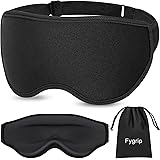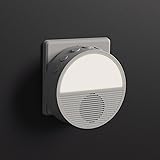In our fast-paced modern world, the transition from daily activity to restful sleep can often feel like an uphill battle. The mind, still buzzing with thoughts and tasks, along with a body holding onto accumulated tension, frequently prevents the peaceful descent into slumber. Establishing a calming evening routine is therefore considered to be incredibly beneficial for overall well-being and sleep quality.
For those seeking a gentle yet effective method to wind down, the practice of gentle bedtime yoga is often recommended. It is a wonderfully accessible approach, designed not for strenuous exercise but for deep relaxation and preparation for sleep. The video above guides you through a delightful, entirely reclined yoga sequence, perfect for easing into the night.
Unwinding with Gentle Bedtime Yoga: Your Path to Deeper Sleep
A structured evening routine is often regarded as a cornerstone of good sleep hygiene. Imagine if, after a demanding day, your body and mind were gently coaxed into a state of tranquility rather than being abruptly shut down. This intentional wind-down period allows the nervous system to shift gears, transitioning from a state of alertness to one of rest.
Beyond simply turning off screens, an effective evening routine often includes activities that promote calm. This could be reading a physical book, listening to soothing music, or, as is suggested here, engaging in a gentle yoga practice. The consistency of such a routine helps signal to your body that it is time to prepare for sleep, fostering a sense of predictability and security.
Why Gentle Bedtime Yoga is Ideal for Sleep
Unlike more vigorous styles of yoga, which are known for their energizing effects, gentle bedtime yoga is specifically tailored for relaxation. It is a practice characterized by slow, deliberate movements and sustained holds, making it accessible to individuals of all experience levels, including beginners. The unique aspect of an all-reclined sequence, as demonstrated in the accompanying video, means the practice can even be performed in bed, maximizing comfort and minimizing any effort that might disrupt the winding-down process.
This type of practice actively supports the activation of the parasympathetic nervous system, which is sometimes referred to as the “rest and digest” system. When this system is engaged, the body’s natural relaxation responses are initiated; heart rate can slow, muscles are allowed to soften, and the mind is encouraged to quieten. Furthermore, the gentle stretches are designed to release physical tension that might have accumulated throughout the day, addressing common areas of stiffness such as the hips, hamstrings, and spine.
Mastering Your Breath for Restful Sleep
Breath, or pranayama in yoga philosophy, is a powerful tool for influencing the nervous system. While balanced breathing (equal inhale and exhale) is often encouraged in general yoga practice, a specific technique is often recommended for aiding sleep. It is suggested that a longer exhale can significantly contribute to activating the parasympathetic nervous system.
This technique typically involves inhaling for a shorter count, perhaps four, and then extending the exhale to a longer count, such as six or even eight. Imagine if each exhale was like a gentle sigh, releasing tension and signaling to your body that it is safe to relax deeply. This intentional lengthening of the exhale slows the heart rate and calms the mind, preparing the entire system for a restorative night’s sleep. Practicing this mindful breathing throughout your gentle bedtime yoga sequence can significantly enhance its soothing benefits.
Key Reclined Poses for Evening Relaxation
The beauty of a reclined yoga practice is that it allows the body to be fully supported, inviting deeper surrender and release. Several key poses are often included in a gentle bedtime yoga sequence, each offering unique benefits for unwinding tension and preparing for rest.
- Reclined Butterfly (Supta Baddha Konasana): This pose gently opens the hips, an area where much emotional and physical tension can be stored. The soles of the feet are brought together, and the knees are allowed to fall open, creating a gentle stretch along the inner thighs and groins. Hands might be rested on the belly, or optionally stretched overhead for a full-body release.
- Reclined Spinal Twist with Hamstring Stretch: Twists are often known for their ability to release tension along the spine and promote detoxification. In this reclined variation, one knee is pulled towards the chest and then crossed over the body. A gentle hamstring stretch can be added by straightening the crossed leg, further easing tightness in the back of the leg. It is important that the opposite shoulder blade remains anchored, ensuring the twist originates from the mid-back for maximum benefit.
- Half Happy Baby Pose (Ardha Ananda Balasana): This pose offers a deeper hip opener, targeting the hip flexors and inner groin. With one knee drawn towards the chest and then opened to the side, the foot is held. The intention is often to push the knee open while simultaneously pulling it down, creating a gentle yet effective stretch. The other leg can be extended or bent for counterweight and stability.
- Reclined Pigeon Pose: A beloved hip opener, this pose gently stretches the outer hip and glutes. One ankle is crossed over the opposite knee, and the bottom thigh is drawn towards the chest. This pose is particularly beneficial for releasing tension in the hips, which can often contribute to lower back discomfort. Emphasis is placed on keeping the upper body relaxed and heavy, allowing gravity to assist in the stretch.
- Banana Pose (Ardha Chandrasana variation): While typically an active standing pose, a reclined banana pose offers a wonderful side body stretch. With hips shifted to one side, the ankles and upper body are walked to the opposite side, creating a crescent shape with the body. Imagine if your entire side body, from shoulder to hip to ankle, was gently lengthened and released, promoting spaciousness and ease.
These poses, when practiced with awareness and a focus on breath, are considered powerful tools for releasing physical and mental stiffness, preparing the body for a deeper, more restorative sleep.
Cultivating Deep Relaxation and Mindfulness
The ultimate goal of gentle bedtime yoga is to facilitate deep relaxation, making it easier to drift off to sleep. This extends beyond just the physical poses; it also encompasses a mindful approach to your body and breath. Throughout the practice, it is often encouraged that eyes be closed to internalize focus and begin the process of winding down. Simple acts, like softening the muscles along your jaw, in your neck, and in your shoulders, can profoundly deepen the sense of calm. These are areas where tension is frequently held unconsciously.
As the practice concludes, the transition into Savasana (final resting pose) is a pivotal moment. This is where the body integrates the benefits of the movements and breathwork. It is a time for complete stillness, allowing every muscle to relax, starting from the crown of your head and extending down to your feet. Imagine if, after releasing all physical and mental effort, you were gently guided into a natural breath rhythm, ready to embrace a night of peaceful rest. This holistic approach makes gentle bedtime yoga an invaluable practice for improved sleep.








